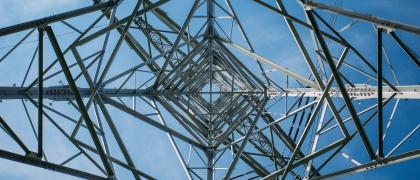
Impact of e-mobility on energy grids
The increasing spread of electric vehicles harbours both opportunities and challenges for modern energy grids. In this article, we look at the long-term advantages and disadvantages of the transformative relationship between electric mobility and the energy industry.
Decentralised energy storage & intelligent charging technologies
Electric vehicles contribute to the reduction of CO2 emissions by establishing sustainable forms of mobility through a variety of ecological advantages. In particular, the upcoming use of innovative technologies, such as the conversion of traction batteries into decentralised energy storage systems, can help to ensure a high level of grid stability in the future by releasing the stored energy when demand peaks.
In addition, the implementation of intelligent charging technologies such as smart charging has the potential to make charging infrastructure more efficient to use and to optimise the energy consumption of electric vehicles during charging processes. For example, charging at times of low grid utilisation means that energy loads in the electricity grid can be distributed more efficiently and in line with demand.
Risk factors: peak charging times & energy mix
However, every advantage also brings challenges: the significant increase in the number of electric vehicles on our roads harbours the risk of overloading the power grid, especially during peak charging times. If these consumption patterns are not optimized, this can put additional strain on the electricity grids, which could lead to grid instability and - in extreme cases - even local blackouts.
Being able to provide charging infrastructure that is both robust and accessible is crucial for avoiding local grid overloads and requires professional planning of charging networks in advance. At the same time, as the integration of renewable energy continues to increase, the simultaneous charging of numerous EVs can put a strain on the generation capacity for energy from sustainable sources, requiring a delicate balance between energy sources to ensure a seamless transition.
Intelligent charging networks for the harmonisation of power grids & charging networks
Energy suppliers play an important role in harmonising the use of e-vehicles, charging infrastructure and electricity grids. The implementation of smart charging networks is a promising strategy that enables energy suppliers - in close dialogue with e-mobility providers - to make data-based adjustments to electricity & charging tariffs based on real-time grid demand.
Smart approaches such as these would effectively mitigate peak loads and prevent grid instability during periods of increased demand. In addition, energy suppliers can encourage load shifting by further incentivising EV drivers to charge during off-peak periods, which ideally contributes to a more even distribution of energy consumption and less strain on the grid.
Symbiosis between e-vehicles, charging infrastructure & energy ecosystem
Charge point operators (CPOs) also make an important contribution to the smooth integration of e-vehicles and the necessary charging infrastructure into electricity grids. Innovative solutions, such as the aforementioned vehicle-to-grid (V2G) technology, enable e-vehicles to contribute to the stability of the electricity grid at peak times and thus enable better interaction between e-vehicles, charging infrastructure and the energy ecosystem.
In addition, CPOs responsible for charging infrastructure can take a proactive role by investing in upgrading their charging networks through the installation of new charging infrastructure and hardware such as additional transformers, energy storage, etc. This will ensure that the charging infrastructure can cope with the growing demand for energy for EVs without compromising the reliability or performance of the local power grid.
Cooperation between energy suppliers & CPOs for the mobility of tomorrow
Electromobility is redefining our social mobility, and cooperation between energy suppliers, e-mobility providers (EMPs) and CPOs plays a key role in this. Together, the aim is to pave the way for a sustainable and grid-friendly electric future and at the same time master the challenges that e-mobility poses for energy grids.
By promoting innovation, investing in smart solutions and prioritising grid stability, charging point operators and energy supply companies will ensure a seamless and efficient transition to the fully electrified transport landscape of the future.
Further information